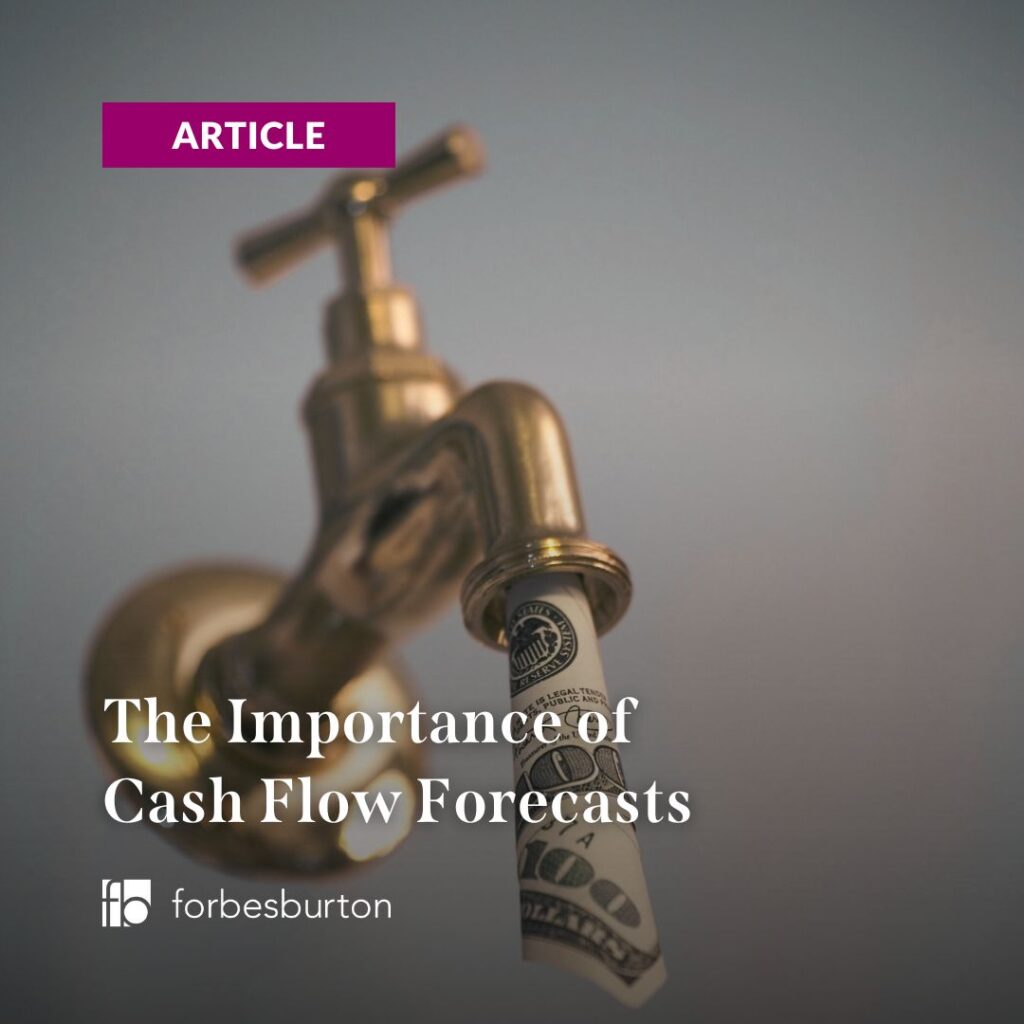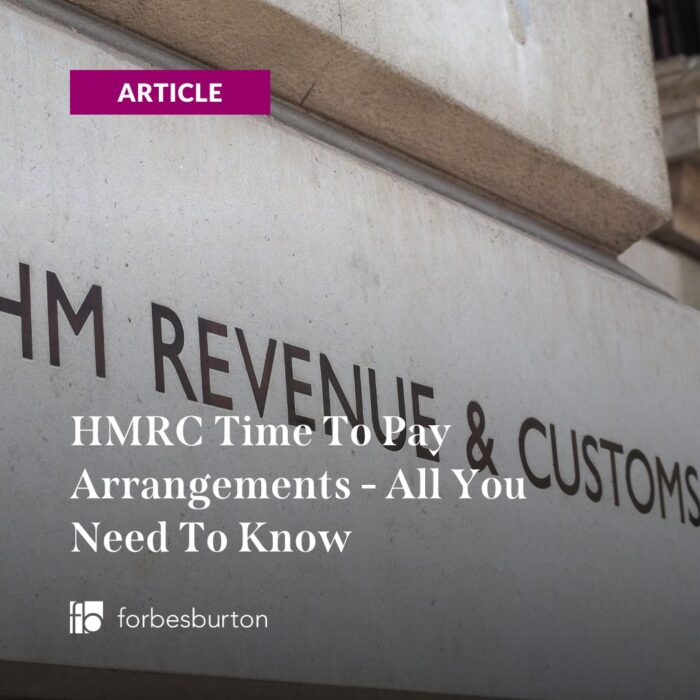
As a business owner, it’s crucial that you understand the importance of cash flow forecasts. That’s why we’ve put together everything you need to know about them, as well as a simple cash flow forecast template. This template is completely free to download and use, allowing you to get started right away. You’ll find the simple cash flow forecast template in our handy Business Toolkit.
The importance of cash flow forecasts can’t be underestimated. Having some sort of idea of how your cash reserves will fluctuate throughout the year allows business owners to plan more effectively.
But what is a cash flow forecast exactly? This guide takes a look at everything you need to know about cash flow forecasting to provide you with the tools needed to prepare your own.
Our simple cash flow forecast template is part of our downloadable Business Toolkit. Get instant access to the guides, tools and resources you need, specially written for limited company directors for free now. No credit card required.
What is cash flow?
Cash flow is the inflow and outflow of monetary resources into and out of a business over a certain time frame. For example, both sales and loan proceeds count as income, while employee salaries and loan repayments count as expenses.
Cash inflow refers to the money that is flowing into a firm from any sources, including sales and other forms of revenue. Cash outflow, meanwhile, describes the movement of money out of a company.
A cash flow forecast is usually a spreadsheet, varying from simple to very complex, which shows where money is going to come in using predicted sales, and go out using what you know expenses will be.
Of course, expenses are usually easier to predict, especially if you have historical figures to refer to and you know what bills you’re likely to pay. Sales and income, on the other hand, are somewhat harder to predict but a good estimation can be used based on past trading patterns.
The importance of cash flow to a company and why it matters.
Exactly why does cash flow play such a crucial role in a company’s success?
Every company, big or small, needs capital to function. No matter what field you’re in, running a company is an expensive endeavour. It should come as no surprise then, that cash flow is crucial to the success of your organisation.
Cash flow is the lifeblood of every company, ensuring that operating costs, employee salaries, and other fixed costs can be met and the doors to the store remain open year-round.
Those that have a steady stream of income coming in will be in a better position to invest in expansion strategies like marketing, product development, and human resources. All of these are essential to your company’s long-term success and growth.
What is a cash flow forecast?
The prediction of future financial inflows and outflows is called cash flow forecasting. Therefore, a written report on this is referred to as a cash flow forecast.
You could expect your company to earn £200,000 in profit next year, but if expenses are high, it might really be set to lose £50,000. By analysing this data, you can determine whether you will have enough money to cover your expenses.
Business owners often consult cash flow forecasts before deciding whether to seek outside financing. If your company’s revenue is reasonably stable, cash flow forecasting may be relatively simple. Businesses that experience seasonal ups and downs, however, may find the process more complicated.
A projection of your company’s cash flow for the year ahead can be compiled with the help of invoices and receipts. If you’re not sure how to start forecasting, or need some assistance in completing one, there are professional services that can help.
What is the importance of cash flow forecasts?
There is a certain level of unpredictability in the corporate sector. If your company’s cash flow seems erratic, it may be worthwhile to project it out into the following fiscal year in order to get a sense of how things are going to pan out.
Finding out whether your firm will be successful over the following 12 months is the primary objective of cash flow forecasting. Aside from predicting the future of your firm, it will also detail any projected changes, both good and bad.
Cash flow forecasts do more than just foretell the future of your company’s finances though. They also allow you to keep tabs on expenses and find ways to save money. You can better prepare for unexpected issues and make growth plans with surplus funds with a solid cash flow forecast.
This makes it an extremely valuable resource for small firms aiming to better handle their finances.
What should a cash flow forecast include?
So, you’ve thought it would be a good idea to construct a cash flow projection for your company, but what exactly should one contain? Let’s check it out.
Your cash flow forecast must incorporate two key types of information: cash inflows (funds going into your company) and cash outflows (funds leaving your company).
The inflows your business has could include revenue forecasts, investment pay outs, loan advances, and anticipated asset sales.
Outflows should incorporate all invoices that need paying, employee salaries, operational costs, loan payments, and any other outgoing you can think of.
Remembering every financial outgoing from your company can be difficult. If you’re struggling to recall all of the bills and commitments your business has to pay for, you may find this list of typical outgoings useful as a starting point –
- Materials/stock
- Employee salaries (gross)
- Gas
- Electricity
- Water
- Telephone
- Internet
- Premises rent
- Business rates
- Equipment rental
- Insurances
- Loans
- IT/website costs
- Subcontractors
- Accountants
- Legal fees
- VAT paid to HMRC
- VAT on expenses
- Vehicle leases
- Travelling costs
- Repairs/servicing costs
- Stationery & postage
- Marketing costs
- Payment processing
- Taxation/Corporation Tax
- Director’s income (if limited company)
- Drawings including NIC (for sole traders)
Need some free advice?
Managing your cash flow can quickly become difficult in a challenging economic landscape. That’s why we offer free, no-obligation advice to explore your options. Find out more →
How to create a cash flow forecast
If you don’t already have a cash flow forecast, then you should start right away. In general though, you should have a forecast prepared for the start of each new financial year. This will help you to determine the best time to spend on things you think will benefit your business, and to be careful during leaner periods.
The building of your cash flow forecast can be as simple or as complex as you wish, but it’s worth keeping your report as easy to understand as possible so you can refer to it regularly. Using our own simple cash flow forecast template will make this process even easier.
-
Decide the period for the forecast
The nature of your business determines the time periods that you will select for sales forecast. A usual SME forecast may be over 3, 6 or 12 months. However, when cash flow becomes critical in a business, there may be need for more detailed forecasts for shorter periods such as weekly or even daily.
Short-term forecasts are useful for small businesses as they often don’t have as much credit as bigger firms to cover bills if needed. Looking at a daily breakdown allows business owners to effectively plan the day-to-day cash requirements of their company.
When it comes to determining the liquidity of your business, medium-term forecasts covering the next three months are recommended. These provide a quarterly report from which to work from. If you’re expecting big changes throughout the year, or operate a seasonal business, it’s worth breaking the year down into quarters to keep your figures as accurate as possible.
Long-term forecasts, typically over a year-long period are best used for large scale overviews, and broader thinking such as growth strategies. Given the length of time the report predicts, there’s a trade off in terms of accuracy. These forecasts should be used as an initial point to plan larger strategies around, but shorter forecasts should give you a definitive answer.
-
List all sources by which money enters into your business
The next step to take is to work out a projection of your company’s revenue for the next year. Don’t fall into the trap of just working out a projection for your sales, though. Unless your clients always pay straight away, you may need to factor in how long on average it takes for your invoices to be paid. You’ll also need to add any grant payments, reclaimed VAT, or loan advances that you expect to receive.
Income: Begin with all the income that is due to you, that is, what money the customer owes to you for the service that you have already rendered, and that you expect the customer to pay shortly. Sales forecast is quite tricky, but there are various methods to use such as use of a percentage of leads that will turn into sales.
You can also choose to base your cash flow forecast on the previous year’s sales multiplied by a factor, this principle works on an increase or fall in average year-year sales.
You must be able to review historical data, consider the impact of the economic climate on your sales, and use knowledge and experiences that are peculiar to your business sector.
Funding: This includes other sources such as investments, grants and loans
Asset sales: Another source of business income generation is the sales of assets such as equipment, property and vehicles.
Other income: These may include sources such as task rebates and bank interests.
-
Make a list of all your outgoings
After this, you’ll need to collate all the data you have on your company’s spending and predict how much money your business will pay out over the next year. Take a look at the list in the section (What a cash flow forecast include?) above to gauge what expenses should be included.
This list reminds you about the money that you owe others and the set time for payment. You should list everyone that you are indebted to including HMRC and suppliers of goods and services to your business.
Then outline all the expenditure that you anticipate within a particular time frame. This is necessary and serves to check what expenditures are essential and fixed for smooth running of your business, what costs you can do without and potentially cut (discretionary), and the costs that directly relate to sales. This helps you to draw up your variable costs with decrease or increase in sales.
-
Draw up your cash flow
Various software tools and programs are readily available for use to integrate with your accountancy software. However, the easiest starting point for you might be to use a spread sheet to capture all outgoings and incomes over time. Use our free simple cash flow forecast template to get started.
Once your company’s incomings and outgoings have both been added to your cash flow forecast spreadsheet, you can subtract the outflow from the inflow to arrive at your net cash flow.
Assuming your expenses are less than your revenue, you will have a positive figure, which means your firm is likely to turn a profit. Your company will experience a loss, however, if its expenses are higher than its revenues. If this is the case, you should examine your budgeted expenditures to see if any reductions can be made.
- Make notes on your assumptions and review them over time
It is necessary to keep reviewing the differences in the forecasted and actual values over time. This ensures that there is an improvement in the accuracy of your assumptions and forecasts.
-
Regularly update your cash flow
The nature of your business and frequency of change of factors that affect the cash flow are major determinants of the frequency at which you update and review your cash flow forecast. Major variables include your business working capital, your investment plan and the rate at which your customers pay you. These factors and more will have an effect on your cash flow.
What challenges arise from attempting to create a cash flow forecast?
Predicting a company’s cash flow is difficult for many business owners.
To begin, many company owners just don’t have the time to devote to cash flow forecasting. Indeed, there are times when cash flow forecasting takes a back seat to more immediately profitable company activities.
This is understandable, but by not appreciating the importance of cash flow forecasts, you potentially leave your company open to risks that might have been spotted had you already made one.
It’s possible that you may have to convince internal stakeholders of the importance of cash flow forecasts too. Otherwise, it can be challenging to collect the necessary data. Getting internal stakeholders on board may require some convincing them of the value of cash flow forecasting and the long-term impact it can have on the company.
Why do banks want cash flow forecasts?
Another reason that explains the importance of cash flow forecasts is that one may be required when applying for a company loan at a bank. But why would a financial institution need to examine your cash flow projection, and is there any way to avoid this?
One of the best ways to foretell whether your company will turn a profit in the following fiscal year is to create a cash flow forecast. A bank may want to see a copy of your cash flow projections if you’re trying to get a loan from them to expand your firm. After all, the bank is a for-profit enterprise that stands to suffer a financial loss if you fail to return the loan.
The distinction between cash flow and revenue
Owners of businesses analyse their operations based on a number of metrics, the most prominent of which are revenue and cash flow. In addition, they may also be accustomed to providing accurate forecasts of future results. There is a distinction between the two, however, and knowing this difference is essential if you want to know your true financial standing.
Earnings from the sale of a product or service are known as revenue. Cash flow would be prioritised above income if the company were to receive funds in the form of investments rather than loans or other forms of financing. Cash flow, as its name implies, shows all cash flows into or out of a company’s accounts, regardless of whether they connect directly to sales.
Both revenue and cash flow should be understood in order to evaluate the health of a business. Doing so will provide you with the most realistic overview of how well your company is doing financially.
We can help with a variety of business matters
Business owners have to wear so many different hats that it can become overwhelming. Nobody is an expert in every field though, which is why Forbes Burton has become a trusted ally for many UK companies. We have experts available that specialise in a range of different business issues, so whatever your problem, we can help.
Call us today for free, confidential advice on 0800 975 0380. Alternatively, you can arrange a free meeting with one of our advisers →
What is the formula for net cash flow?
Total cash inflow – total cash outflow = net cash flow
For example, if a carpet shop has made £11,000 in January, but had to pay out £7,000 in wages, supplier fees and bills, its net cash flow will be £4,000
What exactly is a cash flow statement?
A statement of cash flows details the impact of shifts in the income and balance sheets on the available cash. The impact of changes to the company’s assets, liabilities, and equity on its operating cash flow are recorded and reported in this statement. In a nutshell, it reveals if the business generated more money than it spent within the specified time period.
What are the limitations of cash flow forecasting?
Despite the importance of cash flow forecasts, they are unfortunately not infallible.
Increased competition or new rules are only two examples of external variables that might affect cash flow and cause it to deviate from the estimate. That’s why it’s crucial to perform cash flow forecasting on a regular basis. This is particularly true after any significant shift that can affect how the company operates.
Why you need to monitor your business’s cash flow
Cash flow is the lifeblood of any business. It is the movement of money into and out of a business, and it is essential for ensuring that a business can meet its financial obligations.
If you don’t keep a check on your cash flow then issues will start to appear and could become very problematic if not bought under control.
Here are a few of the main reasons why you need to be diligent.
To avoid running out of money
This is perhaps the most important reason why you need to keep an eye on cash flow. If a business does not have enough cash on hand to meet its expenses, it could be forced to close its doors. This is especially true for small businesses, which often have limited access to financing.
To make informed financial decisions
By tracking cash flow, you can make better decisions about how to allocate their resources. For example, if a business is experiencing a cash flow shortage, it may need to delay expansion plans or cut costs. This can help the business to stay afloat in the short term and position itself for long-term success.
To identify potential problems early
By monitoring cash flow, you can identify potential problems early on, such as slow-paying customers or rising expenses. This gives you time to take corrective action before the problems become serious. For example, if you notice that accounts receivable are increasing, you can take steps to collect payments from customers quicker. This can help to prevent a cash flow shortage from developing.
To improve profitability
By improving cash flow, you can free up more money to invest in the business. This has the potential to lead to increased profits. For example, a business that has a good cash flow position may be able to invest in new equipment or marketing campaigns, helping to increase sales and profits.
Understand the importance of cash flow forecasts but not sure where to start?
Accurate cash flow forecasts can enhance a company’s resilience in uncertain times. Knowing how much cash is available at any one time can help you to avoid overstretching and give you time to prepare for leaner periods.
Our simple cash flow forecast template is free to download and a great place to start. If you need extra help to create a professional forecast that provides accurate figures to work from though, we can help.
We have experienced specialists on hand that can help you through forecasting and any other aspect of business planning you need.
If you need help drawing up a cash flow or you think that your company is already facing issues then give us a call. You can reach our advisers on 0800 975 0380 or email [email protected]
Related Articles
We're here for you.
As a dedicated team of Advisers and Consultants our aim is to help you fix the issues and solve the problems within your business.
Find out more →


